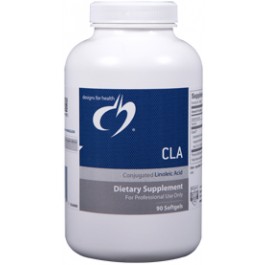The last two decades have shown a dramatic increase in the popularity of fat-free, low fat, non-fat food items. Diet gurus and even the American Heart Association touted the importance of decreasing fat in the diet. However, it is important to understand the makeup of fat and the differences in qualities and types of fat found in our food supply when making conscientious decisions about our health and wellness. Not all fats are created equal; and not all fats are bad for your health!
Fats, also known as lipids, are made up of molecules called triglycerides. Triglycerides are formed from three fatty acids attached to a glycerol molecule (Enig, 2000; 9). The shape of the triglyceride molecules is determined by the types of fatty acids present in the molecule. Fatty acids are long chains of carbon molecules with a hydrogen group on one end and an acidic group on the other end. "Fatty acids are given names depending on the length of the carbon chain and the degree and position of unsaturation of the chain" (Enig, 2000; 10).
Saturated fatty acids are fat molecules in which all of the available binding sites along the carbon chain are occupied by another atom. Thus, the carbons are saturated with all of the atoms they can hold. (Murray, 2005; 81) A stick of butter, or the substance that coagulates on the surface of a pot of soup, is mostly made up of saturated fat. Among the saturated fatty acids there are short, medium and long chain fatty acids. Short chain fatty acids stay in liquid form longer and are partially water soluble (Fallon 2000; 37). Butter, coconut and palm oil are types of short chain fatty acids. Some argue that these fats are better for your health than the long chain fatty acids. "When these shorter-chain saturated fatty acids are used by the body for energy, they do not produce as many calories as the longer-chain fatty acids" (Enig, 2000; 30). Furthermore, shorter-chain fatty acids are not deposited in the adipose tissue in the body. It seems to be more difficult to gain weight from consumption of these shorter chain fatty acids. A new diet book by Cherie and John Calbom, The Coconut Diet, explains how one can lose weight by eating coconut oil.
Unsaturated fatty acids have one or more bonding sites left unoccupied. The two neighboring carbon atoms will instead form a double bond. (Murray, 2005; 82) A monounsaturated fat has only one double bond. Oleic acid, found mostly in olive oil, is a monounsaturated fat. Diets that include olive oil and other monounsaturated fats have been known to lower blood cholesterol levels. Studies have also shown that diets higher in monounsaturated fats from Extra Virgin olive oil can decrease the risk of heart disease and breast cancer. The Mediterranean diet is a good example of a diet high in monounsaturated fats.
Fat molecules with more than one double bond are called polyunsaturated fats (Murray, 2005; 82). Omega-3, omega-6 and omega-9 fatty acids are polyunsaturated fats. These fatty acids are determined by where the first double bond occurs on the carbon chain. Of these polyunsaturated fats, two are said to be essential fatty acids. These are linolenic acid (an omega-6 fat) and alpha-linolenic (an omega-3 fat) (Murray, 2005; 83). The American diet is said to be too high in omega-6 fats, and deficient in omega-3 fats. Most persons will benefit from an increase in consumption of omega-3 fats, which are found in abundance in hemp, flax and pumpkin seeds, walnuts, dark, green leafy vegetables and cold water fish. There are numerous benefits to consuming these fats in your diet.
Margarine and shortening are fats manufactured from hydrogenating vegetable oils to make them more saturated. Hydrogenating is done by adding a molecule to the naturally unsaturated oil. This makes the fat unstable and changes its structure to an unnatural state and is called a trans-fat. (Murray, 2005; 85) "Margarine, vegetable oil shortening and other foods containing trans-fatty acids and partially hydrogenated oils are particularly harmful to cell membrane function" (Murray, 2005; 85). "When people eat fats containing trans fatty acids, these fatty acids are deposited in varying amounts in some of the tissues, and they have an effect on the way the organs in the body function" (Enig, 2000; 42). Studies show that these fats can raise blood cholesterol levels, can significantly cause weight gain, and can even negatively affect reproductive function (Enig, 2000; 43-43). Recent media hype about trans fats being banned in some states, and removed from menus of fast food chains show increasing awareness about the dangers of consumption of these manufactured fats.
As is evident here, it is not simply a matter of decreasing fat in one's diet that will benefit our overall health. It is important to consume healthy, natural fats and oils, and to decrease or eliminate the use of unhealthy, unnatural manufactured oils, as well as to balance the consumption of the different types of healthy fats. So this is the skinny on fat!
Bibliography Enig, Mary.
Know Your Fats. Maryland: Bethesda Press, 2000.
Fallon, Sally.
Nourishing Traditions: The Cookbook that Challenges Politically Correct Nutrition and the Diet Dictocrats. New York: New Trends Publishing, 2000.
Murray, Michael.
The Encyclopedia of Healing Foods. New York: Atria Books, 2005.


